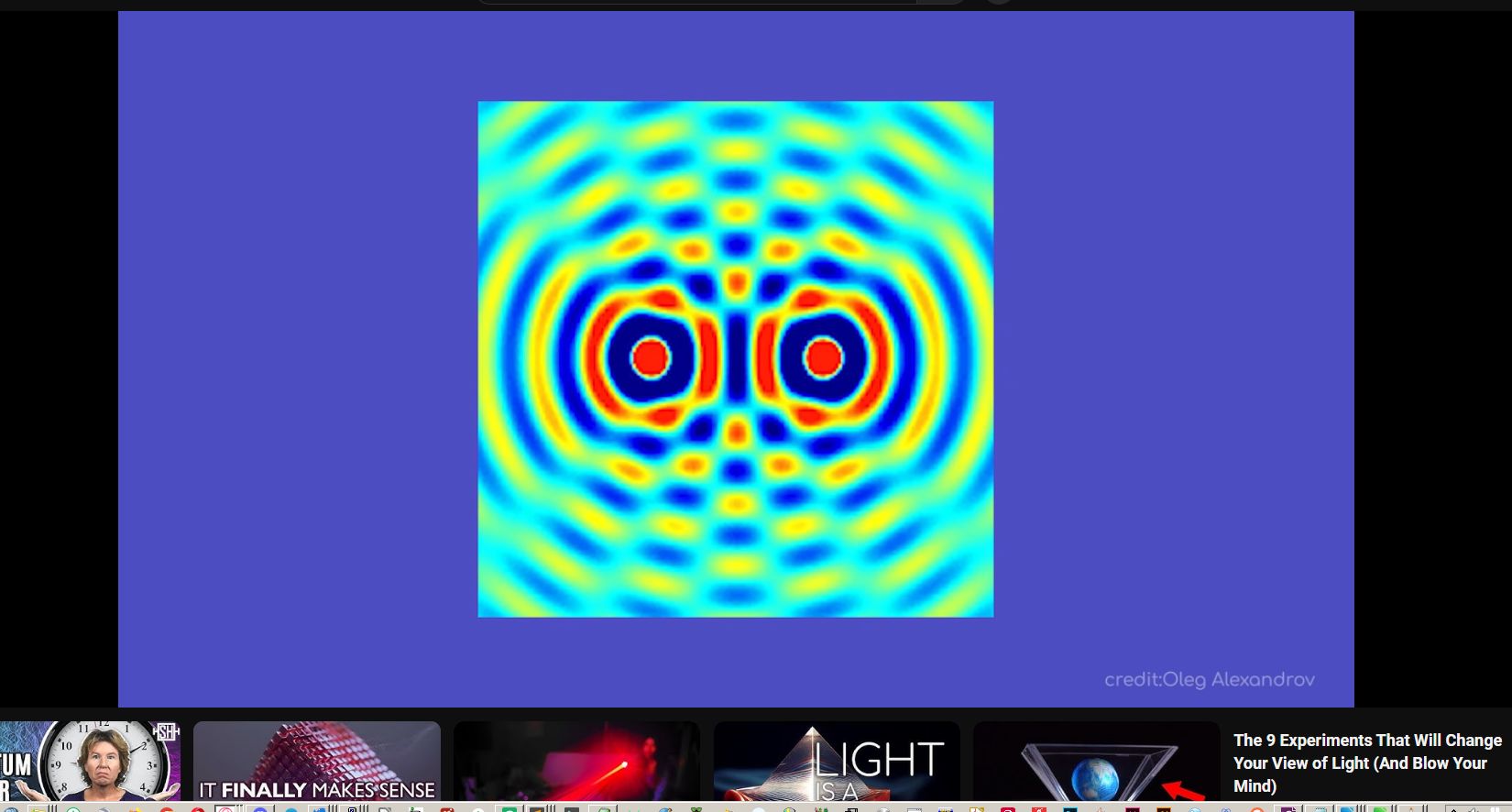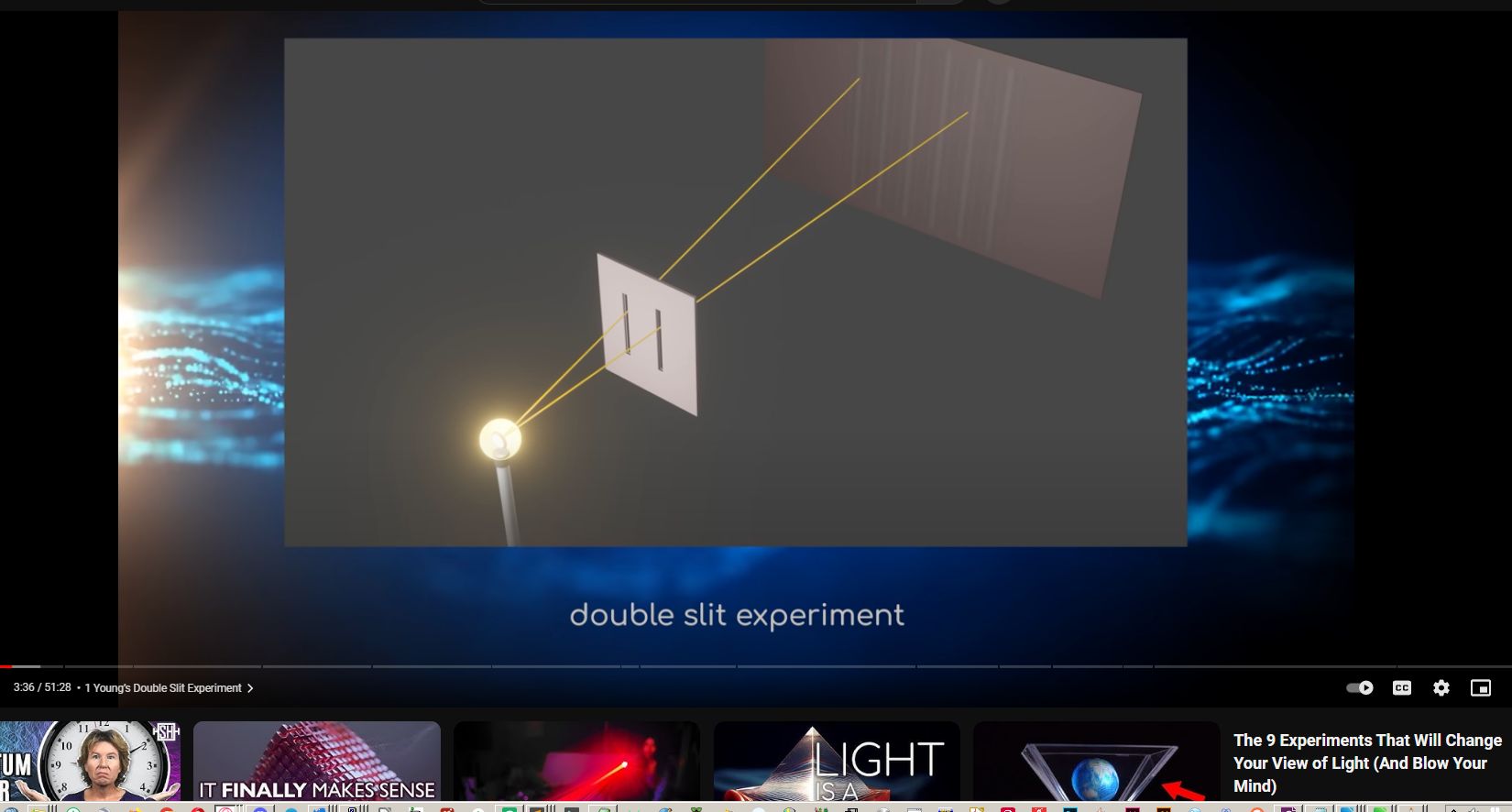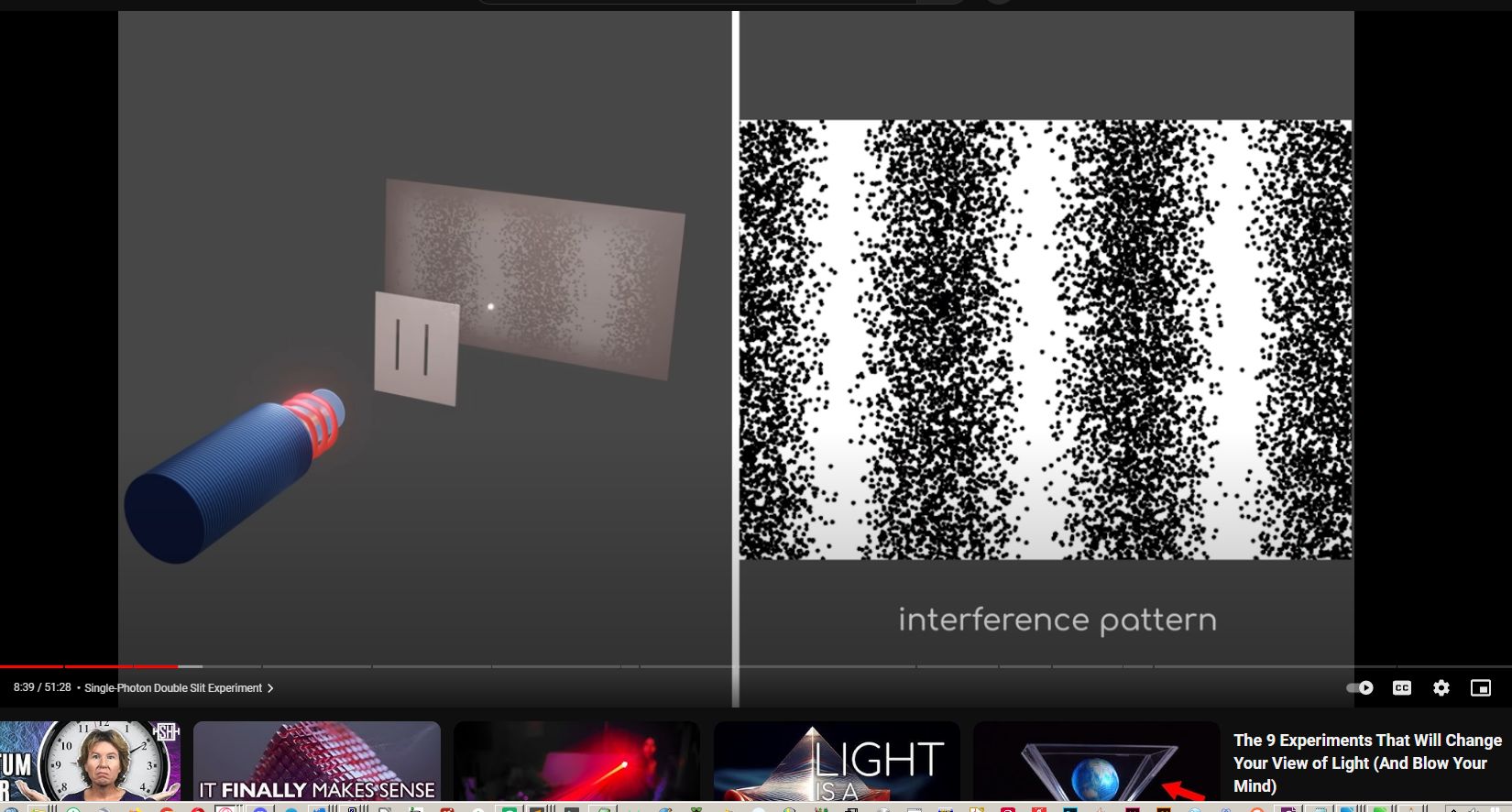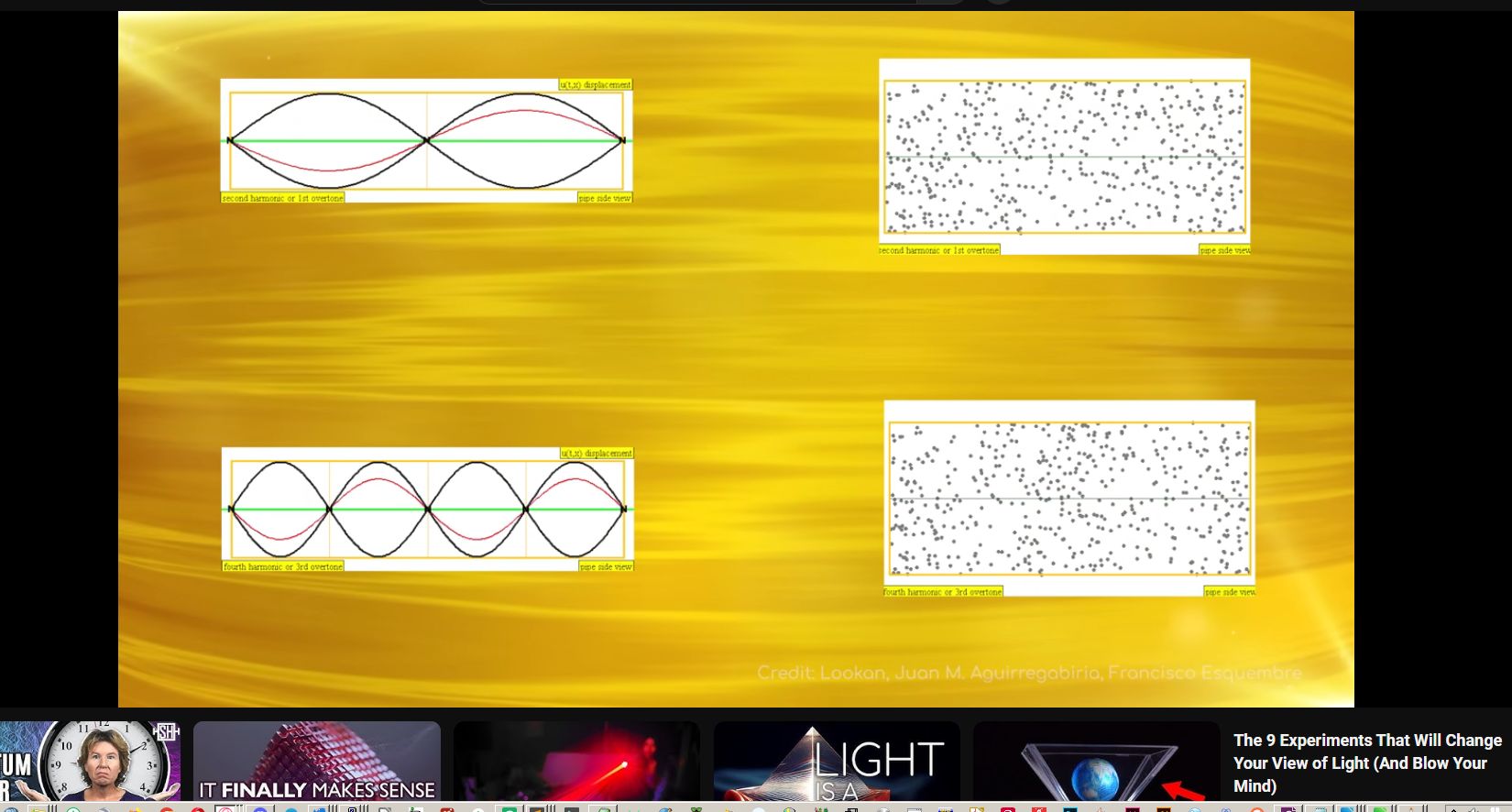Light is Weird
https://www.youtube.com/watch?v=dqIkOHOUzRs
**Unveiling Quantum Mysteries: The Double-Slit Experiment and the Photoelectric Effect**
Delving into the quantum realm unveils a tapestry of mysteries that challenge our understanding of reality. Among these enigmatic phenomena are the double-slit experiment and the photoelectric effect, both pivotal in shaping the foundations of quantum mechanics. Let’s explore these fascinating concepts and their profound implications.
### The Double-Slit Experiment: A Duality of Nature
First conducted by Thomas Young in the early 19th century, the double-slit experiment remains one of the most iconic demonstrations of wave-particle duality. In this experiment, particles, such as photons or electrons, are fired one at a time towards a barrier with two narrow slits. What unfolds is truly astonishing.
When observed, particles behave like discrete entities, creating two distinct bands on the detection screen, as if they were solid particles passing through one of the slits. However, when not observed, they exhibit wave-like behavior, creating an interference pattern of multiple bands, as if they were waves passing through both slits simultaneously and interfering with themselves.
This dual nature of particles, exhibiting characteristics of both waves and particles depending on observation, challenges classical notions of determinism and calls into question the very nature of reality at the quantum level.
### The Photoelectric Effect: Quantum Quanta in Action
Albert Einstein’s work on the photoelectric effect further revolutionized our understanding of light and matter interactions. The photoelectric effect occurs when light, usually in the form of photons, strikes a material surface and causes the ejection of electrons from that surface.
What Einstein’s explanation of the photoelectric effect illuminated was the quantized nature of light energy. He proposed that light behaves not just as a wave but also as discrete packets of energy, now known as photons. These photons, with their specific energy levels, are capable of dislodging electrons from atoms in a manner that classical wave theories couldn’t fully explain.
The photoelectric effect played a pivotal role in the development of quantum theory, laying the groundwork for concepts like the wave-particle duality observed in the double-slit experiment and the broader understanding of quantum mechanics.
### Bridging the Quantum Divide
What these experiments collectively reveal is a quantum reality where particles can exhibit contradictory behaviors depending on observation and where light behaves both as waves and discrete packets of energy. This duality challenges our classical intuitions but opens doors to new realms of understanding and technological advancements.
From the foundations of quantum mechanics to the development of technologies like lasers and photovoltaic cells, the insights gained from the double-slit experiment and the photoelectric effect continue to shape our modern world and inspire ongoing exploration into the quantum mysteries that surround us.
As we peer deeper into the quantum abyss, the journey to unravel these mysteries remains one of the most captivating and transformative endeavors in scientific inquiry, inviting us to rethink our conceptions of reality and embrace the quantum wonders that await discovery.
On the polarization of light
No such thing as a partial wave, a partial harmonic.
**Decoding the Enigma: Partial Harmonics and the Quanta of Light**
Light, with its ethereal dance of colors and frequencies, has long fascinated scientists and philosophers alike. At the heart of its mysteries lies the question of why light, seemingly continuous in nature, behaves in discrete quantums and frequencies. Let’s delve into the realm of partial harmonics and wave-particle duality to unravel this intriguing phenomenon.
### The Nature of Partial Harmonics
Partial harmonics, also known as overtones or harmonics, are integral components of the vibrational spectrum of any oscillating system, be it a string, a column of air, or even electromagnetic waves such as light. When an oscillating system vibrates, it produces not only its fundamental frequency but also multiples of that frequency called harmonics.
In the context of light, these partial harmonics manifest as discrete quantums of energy known as photons. Each photon carries a specific amount of energy determined by its frequency, with higher frequencies corresponding to higher energy photons. This quantization of energy is a fundamental aspect of quantum mechanics and underpins our understanding of light’s behavior.
### Wave-Particle Duality: The Dance of Waves and Particles
One of the most profound revelations in physics is the wave-particle duality exhibited by entities like light. This duality suggests that particles, such as photons, can exhibit wave-like behaviors and vice versa. In the case of light, this duality becomes apparent in experiments like the double-slit experiment, where photons display interference patterns characteristic of waves.
The wave-particle duality, coupled with the concept of partial harmonics, provides a framework for understanding why light behaves in quantized frequencies. When observed as waves, light shows continuous spectra of colors, blending seamlessly across the electromagnetic spectrum. However, when observed as particles (photons), light’s energy is quantized into discrete levels corresponding to specific frequencies.
### Quantum Mechanics and the Fabric of Reality
Quantum mechanics, with its probabilistic nature and wave-particle duality, introduces a new paradigm for understanding the fundamental nature of reality. The quantization of light’s energy into photons not only explains phenomena like the photoelectric effect but also forms the basis for technologies such as lasers, LEDs, and photovoltaic cells.
The discrete quantums and frequencies of light, rooted in partial harmonics and wave-particle duality, challenge our classical intuitions but offer a deeper glimpse into the fabric of the universe. As we continue to probe the mysteries of quantum mechanics, we uncover layers of complexity and beauty that redefine our perceptions of light, energy, and the very essence of existence.
In the dance of partial harmonics and light waves, we find a symphony of quantum phenomena that beckons us to explore, theorize, and marvel at the intricate tapestry of the cosmos.




